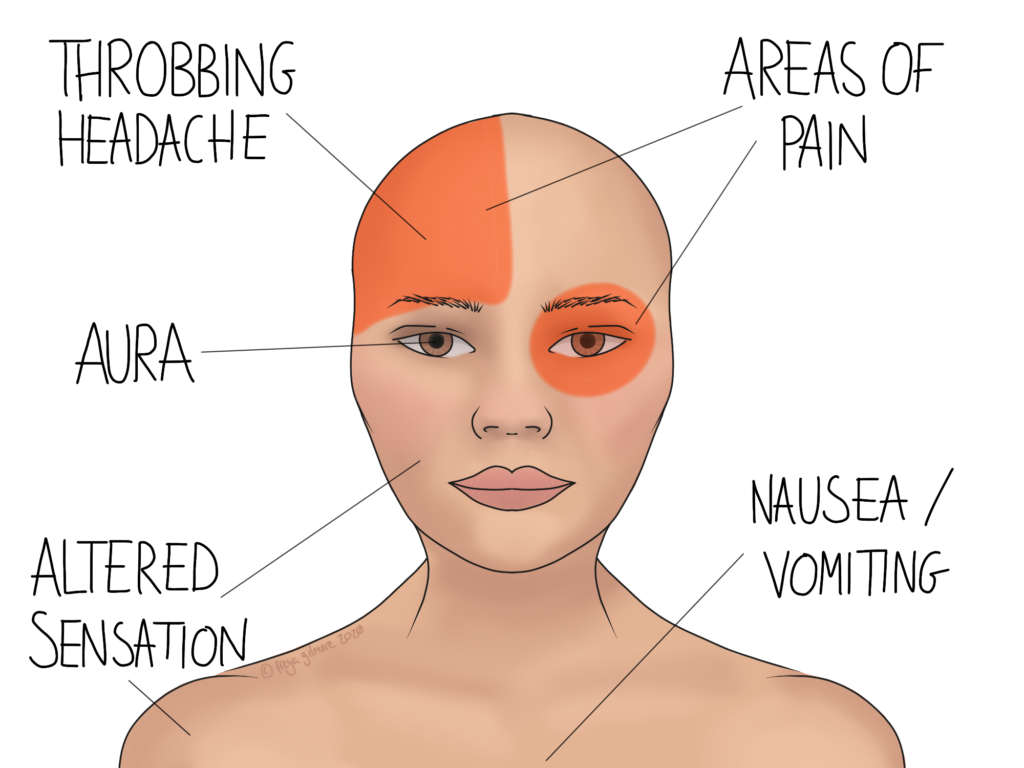Migraines are not just bad headaches: they are diagnosed according to a strict criteria. There are a range of sub-types, including some migraines which do not come with a headache at all.

Migraine Headache Symptoms
Each headache will fulfil all of the following criteria:
- Duration of 4 hours to 3 days
- Featuring 2-4 of the following:
- affecting one side of the head only
- a throbbing character to the pain
- moderate to severe intensity
- made worse by everyday physical activity
- associated with nausea or vomiting, or adverse reaction to light or sound.
As long as there is not a better explanation for the symptoms, and there have been at least 5 episodes, a migraine diagnosis may be appropriate.
What is an Aura?
The stereotypical migraine that might come to mind is a migraine with aura. An aura is a collection of temporary symptoms that typically precede the headache. However, not all migraines will come with an aura, and not all auras are followed by a headache.
Aura symptoms may include:
- visual disturbance
- sensory changes
- speech or language difficulties (such as slurring)
- changes to movement
- issues with balance
Generally the aura stage lasts about an hour, but there is a lot of possible variation in the pattern of symptoms. Two symptoms can occur at the same time, or they might come one after the other. Any symptom could last between 5-60 minutes, during which time it might change. For example, a visual disturbance, like seeing flashing zigzags, could start small and expand across your field of vision over the period of a few minutes. Symptoms might be confined to one side, or they might be present on the left and right.
A key feature is that the symptoms will totally reverse relatively quickly. If your aura symptoms are still present after the headache (if you get one), seek medical advice.
Preventing Migraines
Osteopaths may be able to help you to manage your migraines in the long term. There is still a lot we don’t know about the causes of migraines, but what we do know is the body often makes things worse when it compensates for pain. So you might find that during an episode, your neck or shoulder muscles tense up, causing further aches and pains that might outlast the original symptoms. We can help to manage these aches and pains after an episode and between them in an effort to prevent a repeat of similar symptoms. Non-migraine headaches could develop in response to any residual tension in the neck, which would have slightly different symptoms but still cause discomfort.
We can also support you with identifying triggers. Hormonal, stress, and dietary factors often play a role in the development of migraines, so keeping a diary can help. Try to monitor your cycle, stress levels, and food and drink intake alongside your migraine symptoms. You’re welcome to bring this information along to your appointments, and we can help you to spot patterns and suggest changes that might help.
Click here to make an appointment with Beverley for your migraines
